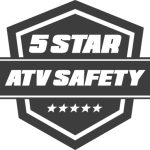ATV Training
The ATV manufacturers believe training can improve both riding skills and the knowledge that riders have towards safe ATV use. Unfortunately the majority of riders injured on ATVs are experienced, but very few have completed a training course.
eCourse
The FCAI manufacturers have developed an on-line course to outline the potential risks to riders, and also to introduce a safe approach system to enable both new and existing riders to reduce risks. This 30 minute course is followed by a 20 question quiz that establishes participant knowledge and understanding of the issues. A certificate can be printed off upon successful completion.
ATV Tips

The manufacturers of ATVs are serious about improving safety outcomes, and have developed the 5 Star Safe ATV User Guide to assist riders to improve their own safety outcomes:
- Choose a vehicle which is fit for purpose – for the task and the rider.
- Wear a helmet – the most effective safety device.
- Rider training – will allow you to fully understand both the ATV’s features and its limitations.
- Don’t allow passengers on single seat ATVs, and no kids under 16 on adult size ATVs.
- Follow the manufacturer’s guidance and warnings.
1 – INTRODUCTION – THE 5 STAR SAFE ATV GUIDE
2 – THE RIGHT GEAR TO RIDE
3 – CONTROLS, MAINTENANCE & POSTURE
4 – THE BASICS OF SAFE RIDING
5 – ADVANCED RIDING TECHNIQUES
6 – CARRYING LOADS & TOWING
7 – LOADING AND TRANSPORTING YOUR ATV
8 – TAKING RESPONSIBILITY FOR SAFETY